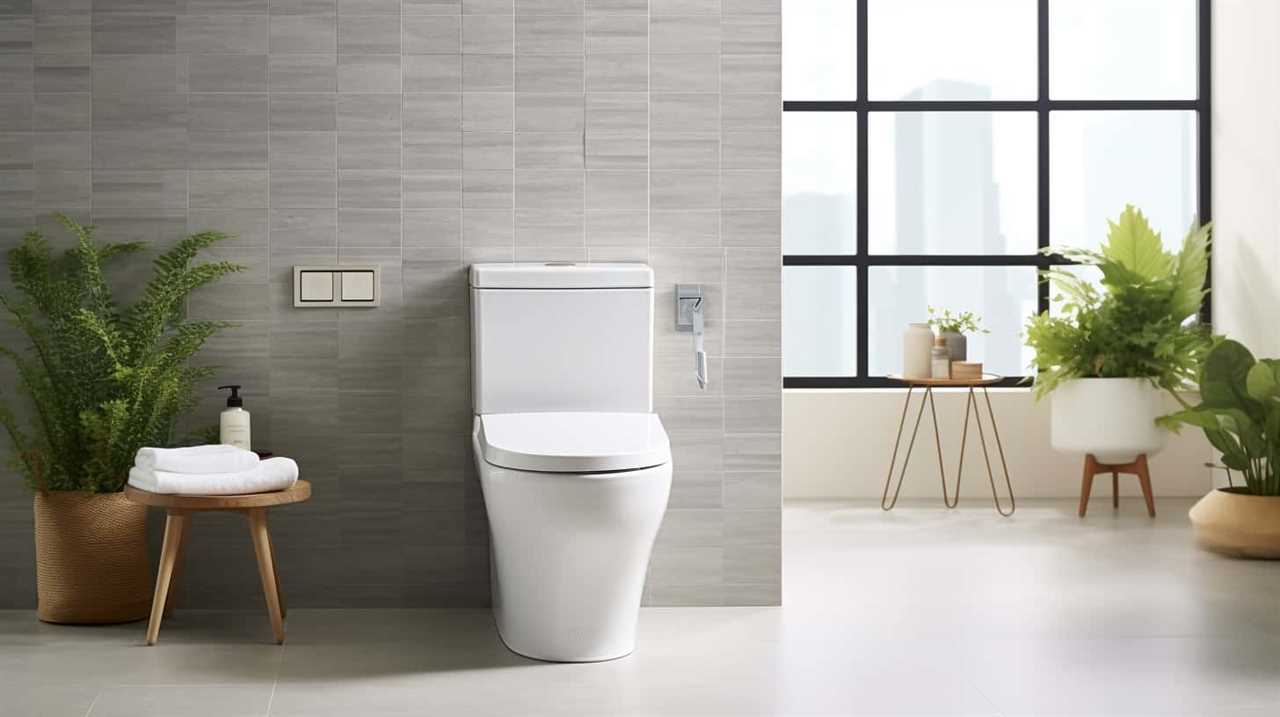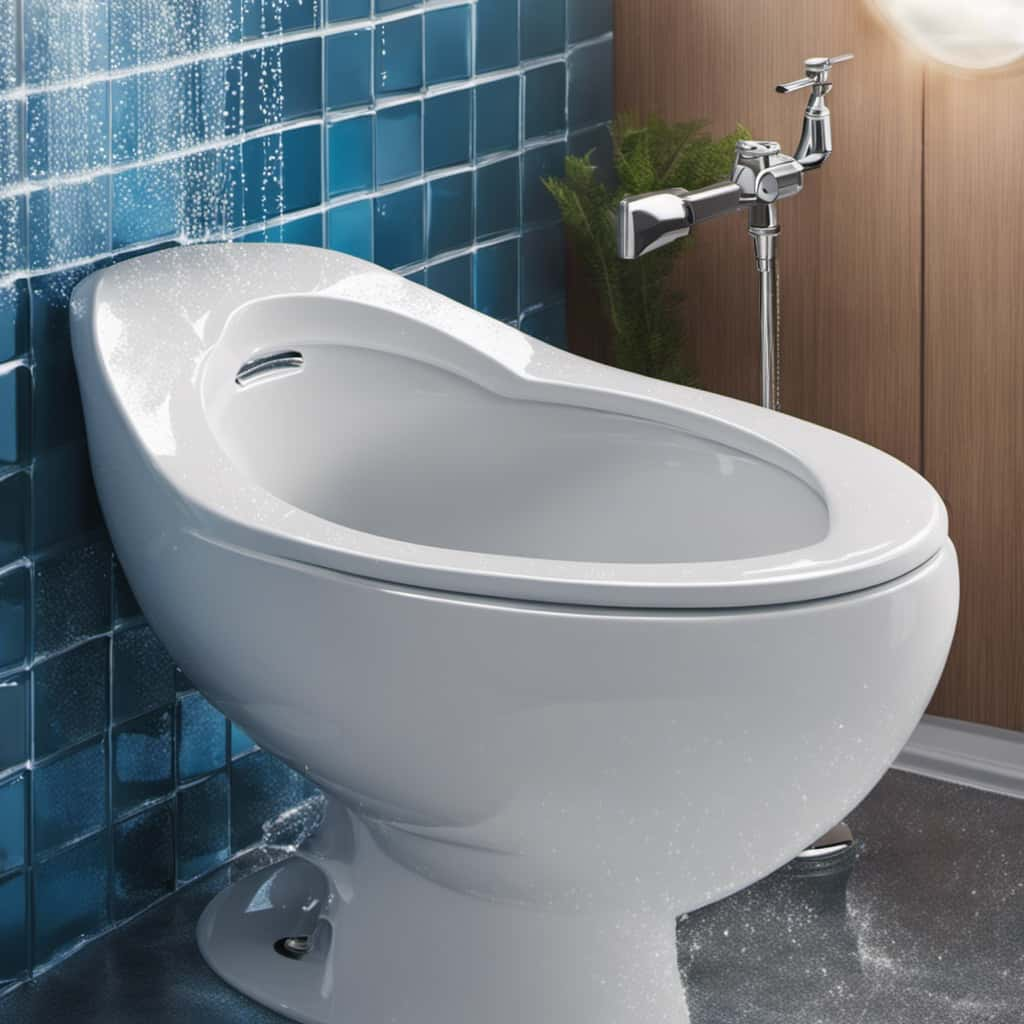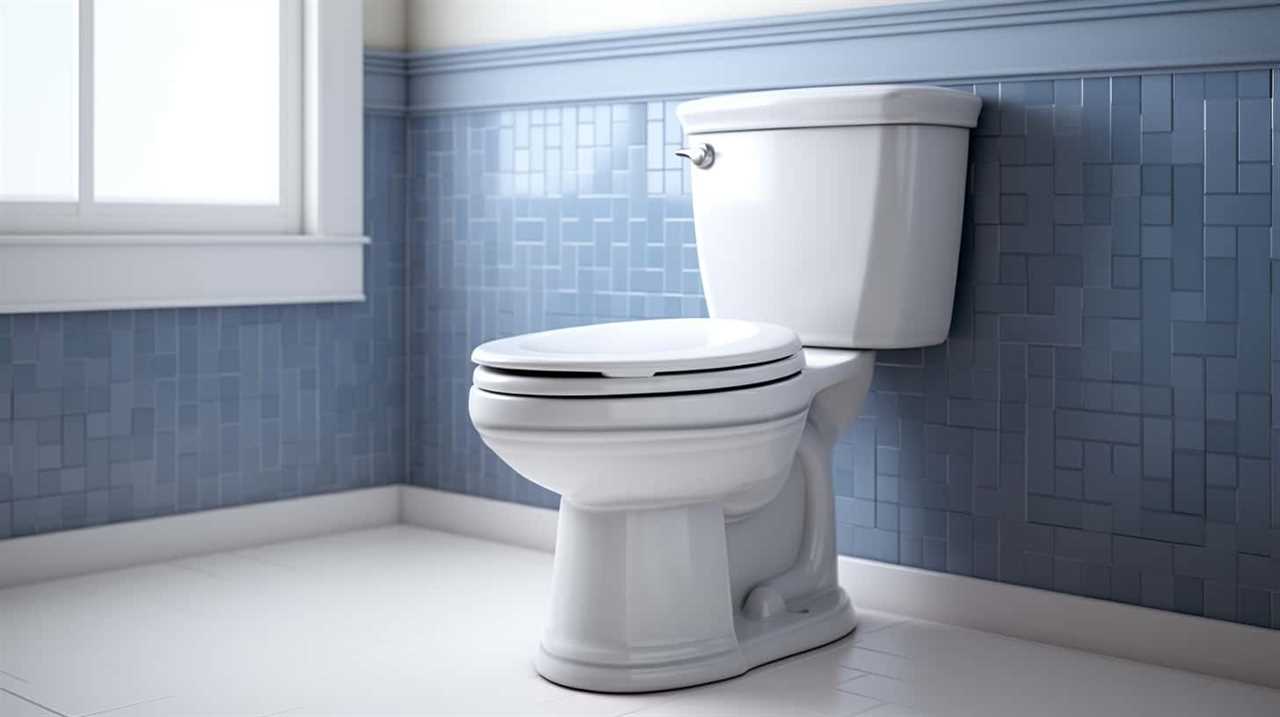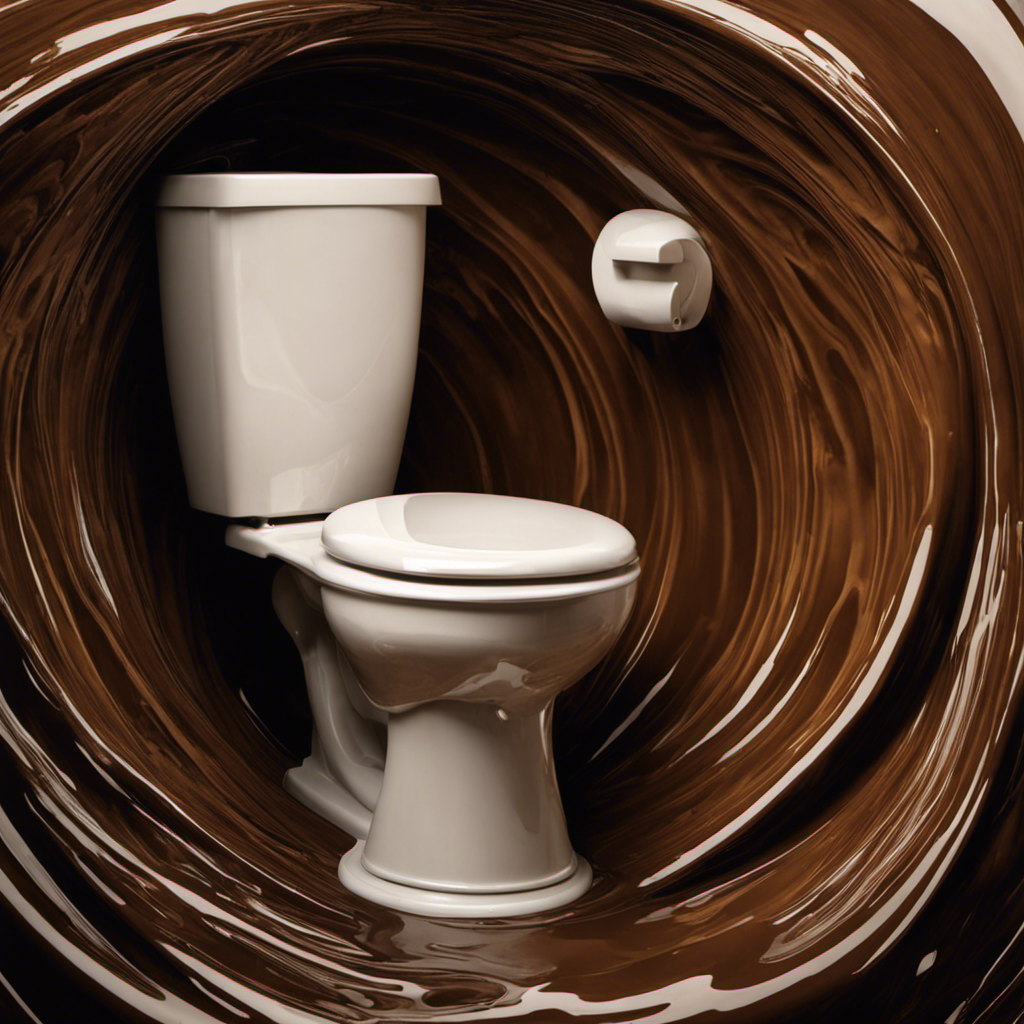Have you ever been amazed by the incredible power behind a toilet’s flush? Get ready to gain some insight.
In this article, we will delve into the intricacies of what makes a toilet flush more powerful. From water pressure to flapper valve design, siphoning action to bowl shape and size, and even trapway diameter, we will explore the engineering marvels that contribute to a truly mighty flush.
Get ready to enter the realm of toilet mastery.
Key Takeaways
- Adequate water pressure and flow are essential for a powerful flush.
- The design of the flapper valve impacts the efficiency and strength of the flush.
- The siphoning action created by the flapper valve lifting enhances the power and efficiency of the flush.
- Factors such as bowl design, trapway diameter, flush valve size, and rim jets also contribute to a more powerful flush.
Water Pressure
One key factor in achieving a more powerful toilet flush is having sufficient water pressure. The plumbing infrastructure plays a crucial role in maintaining the necessary pressure level for an efficient flush.

Adequate water pressure ensures that water flows swiftly and forcefully through the toilet’s internal mechanisms, effectively clearing the bowl. Additionally, it helps prevent clogging and ensures that waste is thoroughly flushed away.
However, it’s important to balance water pressure with conservation efforts. While it’s essential to have enough pressure for a powerful flush, excessive water pressure can lead to wastage. Therefore, it’s recommended to optimize water pressure to strike a balance between a powerful flush and water conservation.
Regular maintenance and monitoring of the plumbing infrastructure can help achieve this delicate balance.
Flapper Valve Design
To achieve a more powerful toilet flush, an important aspect to consider is the design of the flapper valve. The flapper valve is a crucial component of the toilet mechanism that controls the flow of water from the tank into the bowl during a flush.

Here are three key factors to consider when it comes to flapper valve design:
- Size and weight: A properly sized and weighted flapper valve ensures a strong and efficient flush by allowing an adequate amount of water to enter the bowl swiftly.
- Material: The material used for the flapper valve can affect its durability and performance. Opting for a high-quality material, such as rubber or silicone, can enhance longevity and reduce the need for frequent replacements.
- Seal: A tight seal is essential to prevent water leakage and maintain the optimal water level in the tank. Regular flapper valve maintenance, including cleaning and inspection for any wear or damage, is crucial to ensure an effective seal.
Siphoning Action
The siphoning action plays a crucial role in maximizing the power and efficiency of a toilet flush. When the flushing mechanism is activated, the flapper valve is lifted, allowing water to flow from the tank into the bowl.
As the water fills the bowl, it creates a siphoning effect that forcefully removes waste and wastewater. This siphoning action is driven by the difference in air pressure inside and outside the toilet.
As the water flows down the drain, it creates a negative pressure, drawing in air from the surrounding environment. This influx of air enhances the siphoning effect, increasing the velocity and strength of the flush.

Bowl Shape and Size
Now let’s delve into the importance of bowl shape and size in maximizing the power and efficiency of a toilet flush. The design of the toilet bowl plays a crucial role in ensuring an effective flush. Here’s why:
- Toilet Seat Design: The shape and contour of the toilet seat can greatly affect the flow of water during a flush. A well-designed seat helps to create a smooth and unrestricted path for the water, allowing for a more powerful flush.
- Bowl Shape: The shape of the bowl determines how the water swirls and flows during a flush. A bowl with a wider opening and a deep, narrow bottom promotes a stronger siphoning action, resulting in a more forceful flush.
- Flush Handle Placement: The placement of the flush handle also affects the efficiency of the flush. A well-positioned handle allows for a quick and easy activation of the flush mechanism, ensuring a swift and powerful flush.
Trapway Diameter
Continuing our exploration of bowl shape and size, let’s now delve into the significance of trapway diameter in maximizing the power and efficiency of a toilet flush. The trapway, which is the channel that connects the bowl to the drainpipe, plays a crucial role in waste removal capacity and flush efficiency. A wider trapway allows for a larger volume of water and waste to pass through, resulting in a more forceful flush. This ensures that waste is swiftly and effectively removed from the bowl, minimizing the risk of clogs and blockages. To illustrate the importance of trapway diameter, consider the following table:
| Trapway Diameter (inches) | Flush Efficiency | Waste Removal Capacity |
|---|---|---|
| 2 | Low | Limited |
| 3 | Moderate | Satisfactory |
| 4 | High | Optimal |
| 5 | Very High | Excellent |
| 6 | Exceptional | Outstanding |
As demonstrated in the table, a larger trapway diameter results in increased flush efficiency and waste removal capacity. Therefore, when considering a toilet, it is crucial to pay attention to the trapway diameter to ensure a powerful and efficient flush.
Frequently Asked Questions
How Does the Water Pressure in a Toilet Affect Its Flushing Power?
Water pressure plays a crucial role in determining a toilet’s flushing power. The higher the water pressure, the more forceful the flush. This is because increased pressure propels the water with greater velocity, effectively clearing waste more efficiently.

What Are the Different Types of Flapper Valve Designs and How Do They Impact the Flushing Power?
Different flapper valve designs, such as materials and seal quality, play a crucial role in determining the flushing power of a toilet. These factors directly impact the force and efficiency of the flush.
What Is the Siphoning Action in a Toilet and How Does It Contribute to a More Powerful Flush?
The siphoning action in a toilet is a crucial factor in achieving a more powerful flush. It creates a vacuum that pulls water and waste through the system, while high water pressure ensures efficient flushing.
How Does the Shape and Size of the Toilet Bowl Influence Its Flushing Ability?
The shape and size of the toilet bowl directly affect its flushing ability. A well-designed bowl with a larger diameter and proper slope promotes efficient water flow, resulting in a more powerful flush.
What Is the Significance of the Trapway Diameter in Determining the Strength of a Toilet’s Flush?
The trapway diameter is a key factor in determining the strength of a toilet’s flush. It directly affects the flow of water and the pressure it exerts, resulting in a more powerful flush.

Conclusion
In conclusion, the power of a toilet flush is determined by various factors. Water pressure, flapper valve design, siphoning action, bowl shape and size, and trapway diameter all play a crucial role in achieving a more powerful flush.
These elements work together to create a seamless and efficient flushing process, ensuring effective waste removal. Like a well-orchestrated symphony, these components harmonize to provide a powerful and satisfying flush experience.










